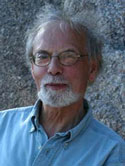Laske, Otto
Biography
Born: 1936
Country: Olesnica, Poland
Studies: Brandeis University, Instituut voor Sonologie in Utrecht
Teachers: Renato de Grandis; Konrad Lechner, Karlheinz Stockhausen
Otto Laske was born in Olesnica (German Oels) near Wroclaw (German Breslau) in 1936, nine years before the end of a 600-year period of German cultural life in Silesia, now a province of Poland. He was born into a musical family, especially on his Northern German mother's side and started piano playing at age 11. After an interruption of almost 13 years in which poetry became his main focus, Laske resumed musical work at age 24, taking up composition on his own (based on Hindemith's Unterweisung im Tonsatz ). Through his involvement with the Darmstadt Music Festival since 1963, Laske was exposed to the work of the international avant-garde and became steeped in the new "atonal" works through his teachers Renato de Grandis and Konrad Lechner, Darmstadt, Germany. He was further encouraged by Th. W. Adorno, his teacher in philosophy at Frankfurt University until 1966, and Karlheinz Stockhausen.
After leaving Germany in 1966, Laske began working in (classical) electronic music , first at Brandeis University in 1966 ( Abgesang ), then in Montreal in 1969, and in a more focused way in computer music at the Instituut voor Sonologie in Utrecht, The Netherlands, starting in 1970. Between the time of leaving Utrecht (1975) and the establishment of his own studio in Needham, MA (1989), Laske traveled to many international studios to produce his compositions.
In 1980, together with Curtis Roads, he established NEWCOMP, the New England Computer Arts Association, for the purpose of showcasing computer music in the Boston area. He carried on for 11 years as its Artistic Director and Director of the International NEWCOMP COMPETITION for computer music.
After resigning from NEWCOMP (which fell into oblivion), in the 1990s Laske produced several instrumental compositions (String Quartet, Organ Piece). Thereafter, he focused increasingly on electro-acoustic music using as before Koenig's Project One program for score synthesis, but now in conjunction with Scaletti's Kyma/Capybara system. He continues work in composition alongside his activities at the Interdevelopmental Institute.
Theoretical Background of Laske's Musical Work
Laske was the first use the notion of score synthesis (by computer) and has consistently used computer programs, above all G. M. Koenig's Project One (1967 f.), to craft the majority of his instrumental, vocal, and electro-acoustic works. This has meant either to orchestrate numerical scores to create vocal and/or instrumental works, or to craft a synthesis of acoustic sample structure and computer-generated score structure through digital instruments and orchestras to create CDs.
In addition to this digital approach, Laske's compositions are influenced by his work in Cognitive Musicology , a field he pioneered while in Utrecht in the early nineteen-seventies, and pursued through research and publication over nearly 25 years into the 1990s. At the center of this musicology stands a theory of composition in which the computer functions as the composer's Alter Ego. Laske's writings on Cognitive Musicology have not been collected; they remain distributed over a large number of international publications (see Tabor, 1999).[1]
Works for Percussion
Piece for Organ and Percussion - Multiple Percussion; Organ
Screening - Multiple Percussion; Flute
Vienne la nuit sonne l'heure - Multiple Percussion; Clarinet,(Violin); Cello
References
